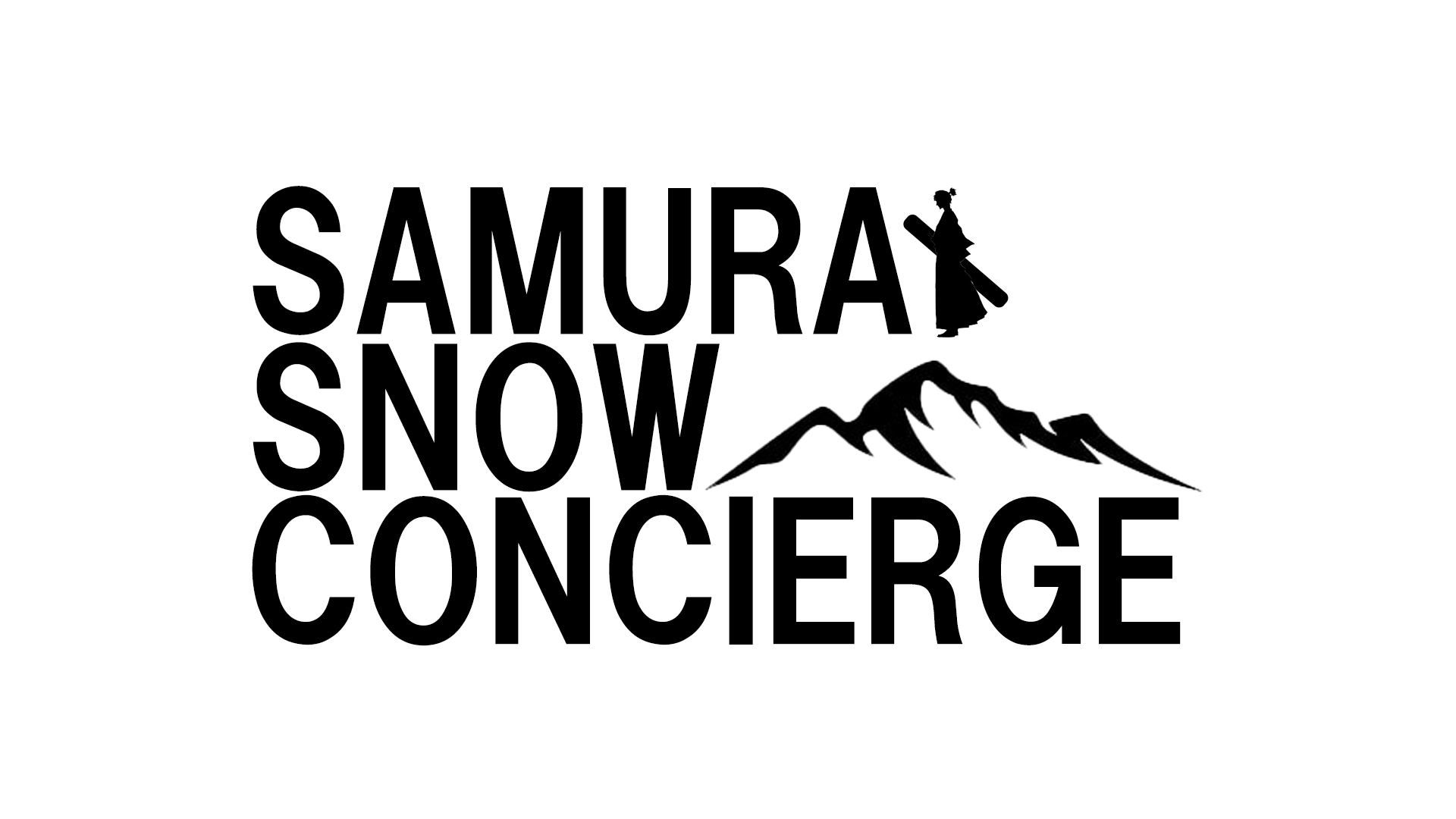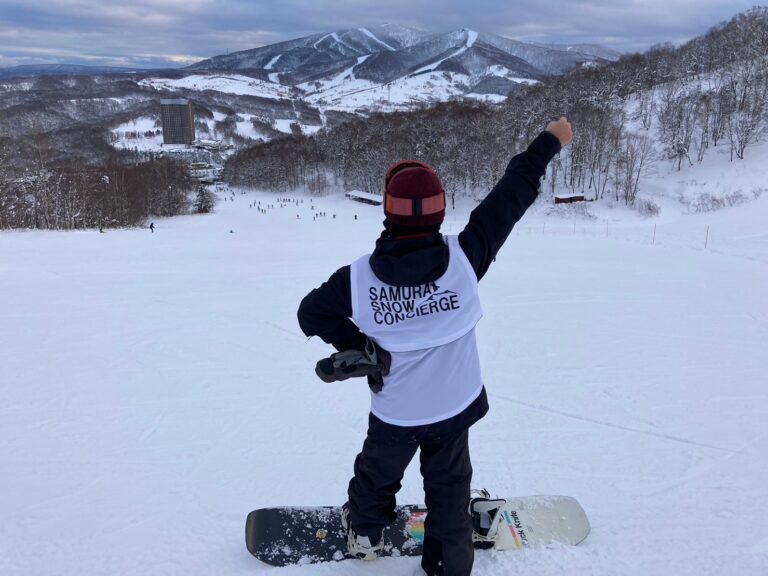For those of you heading to the slopes for your very first snowboarding trip—welcome!
“What if I can’t ride at all?”
“What if I keep falling and get discouraged?”
Do these worries sound familiar?
It’s true: if you can’t ride even a little, snowboarding won’t feel fun—it’ll just feel freezing cold. And if you happen to get injured, your trip could be ruined.
But don’t worry! As long as you focus on the key points, even beginners can snowboard safely and have fun.
In this guide, a certified A-level instructor explains the essential tips for practicing safely, the step-by-step training to enjoy riding down the slopes, and common beginner struggles with practical solutions.

Even complete beginners can manage to ride to some extent in just one day with the right practice! Once you get moving, snowboarding becomes so much more fun!
Key Safety Tips for Snowboard Beginners
Snowboarding—like any sport—must be practiced correctly to avoid injuries.
Here are some key points to make sure you can practice safely and enjoy your time on the slopes.
Use Beginner-Friendly Gear
Most first-timers will rent equipment, and rental shops usually provide beginner boards—so no problem there.
The issue comes when you borrow gear from a friend. Sometimes beginners show up to lessons with equipment lent by advanced friends. Those boards are often designed for experts and can be extremely hard for beginners to handle.

If you use a high-level board as a beginner, progress will be slow and the risk of injury is higher. Always use beginner-appropriate gear.
Practice on Soft Snow
Falling is unavoidable in snowboarding—nobody learns without falling.
But there’s a huge difference between falling on soft powder versus hard, icy slopes.
On ice, falls are painful and discouraging, and fear makes practice harder. On soft snow, falls hurt much less, so you can practice more confidently and progress faster.
For beginners, it’s best to choose ski resorts with softer snow and plan your trip in peak season (January–February) when snow conditions are best.
Stick to Beginner Slopes
It’s tempting to ride straight up to the top of an advanced slope with friends and “just send it.” But this is dangerous and unhelpful.
You’ll only end up tumbling down, gaining fear instead of skill.
Always practice on gentle beginner slopes. Even then, slopes vary—some may be too uneven or too flat to practice effectively.
If possible, take a lesson so instructors can guide you to the most suitable terrain for beginners.
Step-by-Step Training for Beginners
Now, let’s go through the practice steps that will help beginners safely and happily ride down the slopes.
1. Check Your Gear
Before riding, check:
Are the binding screws tight?
Are your boots laced snugly (tight, but not painfully so)?
Do you have gloves, a helmet or hat, and goggles on?
Beginners often leave their boots too loose. If your boots aren’t tight enough, your movements won’t transfer to the board, making it harder to progress. Make sure both boots and bindings are secure.
2. Practice Safe Falling
You will fall—so learn how to fall safely.
Falling forward: Don’t catch yourself with your wrists. Spread the impact by sliding down and absorbing with your whole body.
Falling backward: Tuck your chin and try to roll with the fall, protecting your head.
3. Master the Basic Stance
Good riding starts with good stance—and it stays important all the way through carving, jumps, and tricks.
Think of it as the “ready-to-sprint” position:
Stand straight over the board
Keep your head up
Don’t stick your butt out
Keep your eyes level
Bend your knees slightly
4. One-Foot Practice
You’ll need to ride with one foot unstrapped when moving around the lift area.
Practice kicking and gliding with one foot strapped in. Keep your eyes on where you want to go—not at your feet. Kick snow close to your other foot to move smoothly.
5. Riding the Lift
Your first lift ride can feel intimidating.
Remember to keep your board straight and aligned with the lift at loading and unloading. At the top, you’ll slide off with one foot—scary at first, but totally normal to fall a few times.

If you’re nervous, ask the lift operator to slow the chair—it’s okay to ask!
6. Heel-Side Sideslip
With both feet strapped in, start practicing the heel-side sideslip.
This is sliding down with the board across the slope, using your heels to control speed. It’s safe and controlled, and you’ll learn how to stop.
Tips:
Lean gently against your highbacks
Look ahead (not down)
Keep weight evenly distributed
Engage your core and balance with your arms
To move: lower your toes; to stop: lift your toes
7. Heel-Side Falling Leaf
Once sideslip feels natural, try the falling leaf: sliding diagonally across the slope while switching directions.
This gives you control and freedom—suddenly, you can choose your line across the slope instead of just sliding straight down.
Tips:
Point toes down slightly toward the direction you want to go
Shift weight onto the foot on that side
Turn your head and look in that direction
To stop: lean back gently on both highbacks
At this stage, you’ll already be able to explore most slopes safely.
Next Step: Linked Turns!
The real joy of snowboarding comes with linked turns. Once you’ve mastered the falling leaf, start preparing for them.
Prep 1: Straight Gliding
Practice riding straight down a very gentle slope (direct descent).
Keep your stance: eyes forward, chest up, weight centered or slightly on the front foot.
This will help you transition smoothly into turns.

Choose slopes so gentle that you feel no fear—fear breaks good form.
Prep 2: Toe-Side Sideslip
Turns require both edges, so practice toe-side sliding too.
Focus on leaning gently into the front of your boots, tightening your core, and keeping your chest open.
If you’re scared, start by supporting yourself with your hands while sliding backward slowly.
Common Beginner Struggles (and How to Overcome Them)
Trouble Standing Up
Keep your board close to your hips, lean forward, and push your head ahead of your feet. Think of standing up like rising from a chair—your head must move forward first.
Fear of Riding Straight
Start on slopes so flat you almost stop moving. On steeper terrain, practice sliding at a slight angle and stopping, then gradually increase the angle until you’re riding straight.
Fear of Catching an Edge
“Edge catches” happen to everyone—even instructors.
They’re scarier on flat slopes, so once you’re confident, practice on slightly steeper terrain where edges engage more cleanly.
Conclusion: Lessons Make Progress Faster
In this guide, we covered the basics—sideslip and falling leaf—that allow beginners to safely enjoy the slopes.
With these steps, you’ll be able to ride safely and build confidence. But self-teaching often leads to frustration: practicing on the wrong slope, not knowing what went wrong, or getting stuck in bad habits.
Taking lessons from an instructor helps you learn faster—not only the falling leaf but also linked turns.
If you want to know more about beginner turn techniques or lesson details, feel free to reach out to us at Samurai Snow Concierge—we’re active A-level instructors, always happy to help.








コメント